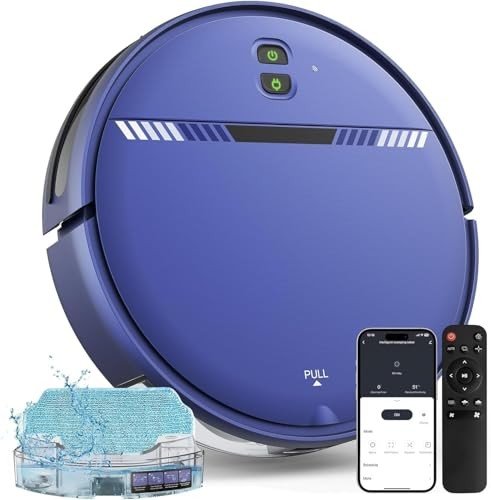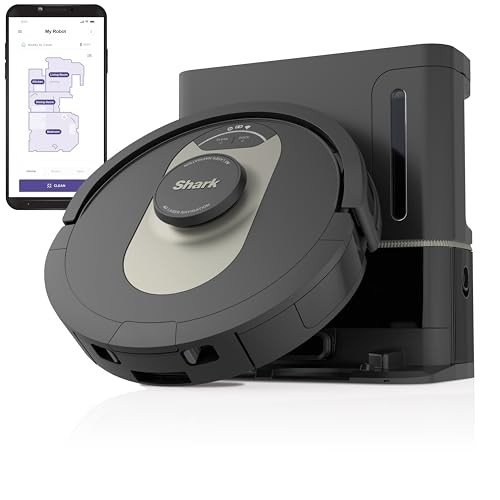0 Jobs Available Now
Trusty job portal lets companies & candidates create profiles,publish job postings, and manage them.
Candidates can search and apply for jobs
What's The Current Job Market For Automatic Hoover Robot Professionals Like?
The Rise of Automatic Hoover Robots: Revolutionizing Home Cleaning
In today's hectic world, technology continues to improve the method we live and work. Among the developments making a considerable influence on homes are automatic hoover robots, frequently referred to merely as robot vacuums. These intelligent cleaning machines guarantee not just convenience however also efficiency in maintaining tidy home. This post explores the advancement, advantages, limitations, and future of automatic hoover robots.
The Evolution of Automatic Hoover Robots
The principle of automated cleaning devices goes back to the early 20th century, but it wasn't till the advent of sophisticated robotics, sensing units, and expert system that robot vacuums ended up being practical. The following table highlights key turning points in the advancement of automatic hoover robots:

| Year | Turning point |
|---|---|
| 1996 | The first automatic vacuum is introduced by Electrolux. |
| 2002 | iRobot launches the Roomba, a consumer-grade robot vacuum. |
| 2010 | Introduction of sophisticated mapping technology and crash sensing units. |
| 2016 | robotic vacuum cleaner sale vacuums begin integrating with smart home systems. |
| 2020 | Increased adoption of AI and machine learning for better cleaning algorithms. |
How Automatic Hoover Robots Work
Automatic hoover robots operate using a mix of sensing units and algorithms to navigate family spaces. Below are crucial parts that contribute to the functionality of these devices:
- Sensors: Lidar (light detection and ranging), infrared, and cliff sensors assist the robot map the area and avoid obstacles.
- Mapping Technology: Many designs now use sophisticated mapping abilities, allowing effective navigation through rooms, determining high-traffic areas, and remembering the design of your home.
- Cleaning Modes: Most robot vacuums feature multiple cleaning modes, including area cleaning, edge cleaning, and methodical navigation.
- App Connectivity: Many modern-day designs permit control by means of smart device apps, making it possible for users to set up cleansings and personalize settings remotely.
Benefits of Automatic Hoover Robots
Automatic hoover robots use a variety of benefits, making them attracting a substantial number of customers. Here are some engaging advantages:
- Time-Saving: Users can arrange cleansings and multitask while the best buy robot vacuum does the work.
- Consistent Cleaning: Regularly scheduled cleanings guarantee that homes remain tidy.
- Accessibility: Robots can clean hard-to-reach areas like under furnishings without manual effort.
- Smart Features: Integration with smart home systems permits voice control and more sophisticated scheduling options.
Limitations of Automatic Hoover Robots
In spite of their advantages, automatic hoover robots have particular disadvantages that users require to think about:
- Battery Life: Most robot vacuum cleaner best vacuums need charging, which can interfere with cleaning cycles.
- Suction Power: While effective for light debris, they might deal with deeply ingrained dirt or thick carpets.
- Upkeep: Regular cleaning of brushes and filters is essential to keep performance.
- Expense: High-end designs can be expensive, which might be a barrier for some customers.
Future of Automatic Hoover Robots
As innovation continues to advance, there are numerous interesting potential customers for automatic hoover robots. Here's what to expect in the coming years:
- Enhanced AI: Improved machine discovering algorithms might enable robots to adapt their cleaning strategies based on the particular design and dirt levels in a home.
- Multi-Functionality: Future designs might not just vacuum but also mop, decontaminate surface areas, or perhaps provide real-time ecological tracking.
- Integration with Home Automation: Increased interoperability with various smart home systems will likely improve control and performance.
- Sustainability: Future versions may concentrate on environmentally friendly functions, including naturally degradable parts and energy-efficient operations.
Often Asked Questions (FAQs)
1. How frequently should I run my automatic hoover robot?
- It largely depends upon your lifestyle, however running it a few times per week can help preserve a tidy home, especially in high-traffic locations.
2. Can I use a robot vacuum on carpets?
- Many robot vacuums are created to work on carpets, but efficiency may differ depending on the density and density. Always inspect the producer's specifications.
3. Do robot vacuums work well with animal hair?
- Most contemporary models are geared up with brushes and strong suction power particularly created to manage family pet hair effectively.
4. Can I schedule cleansings from another location?

- Yes, lots of robot vacuums feature mobile phone apps that allow users to set up cleanings and control functions from anywhere.
5. How do I maintain my robot vacuum?
- Routinely clean the brushes, empty the dustbin, and change filters according to the manufacturer's suggestions to ensure optimum efficiency.
Automatic hoover robots represent a considerable shift in the method households approach cleaning. By integrating sophisticated technology with user-friendly features, these devices not only provide convenience however likewise enhance efficiency in maintaining tidy home. As advancements continue, the future of automatic hoover robots looks promising, possibly using even more intelligent options for contemporary homes.
In a world where time is of the essence, the role of innovation in home care is becoming significantly important, making automatic hoover robots an outstanding financial investment for those aiming to streamline their lives while making sure cleanliness.
Organization Type
Government
Company Size
Only Me
Contact Information
Location
Open Positions (0)
No Data Found!

